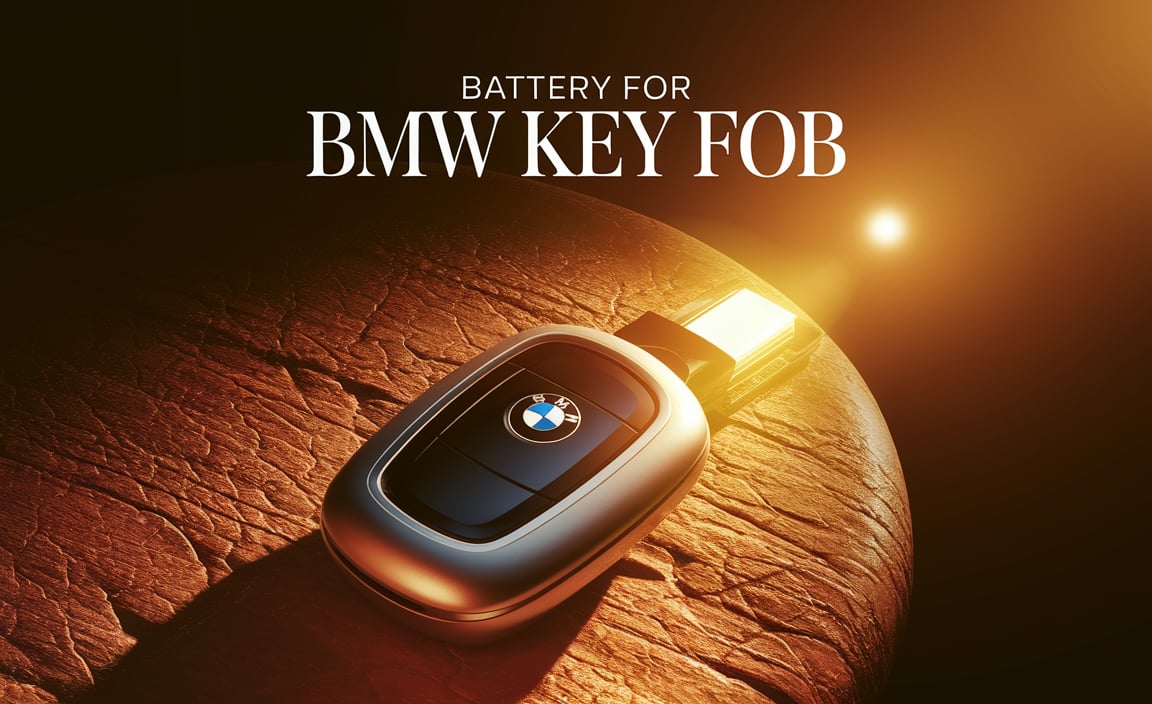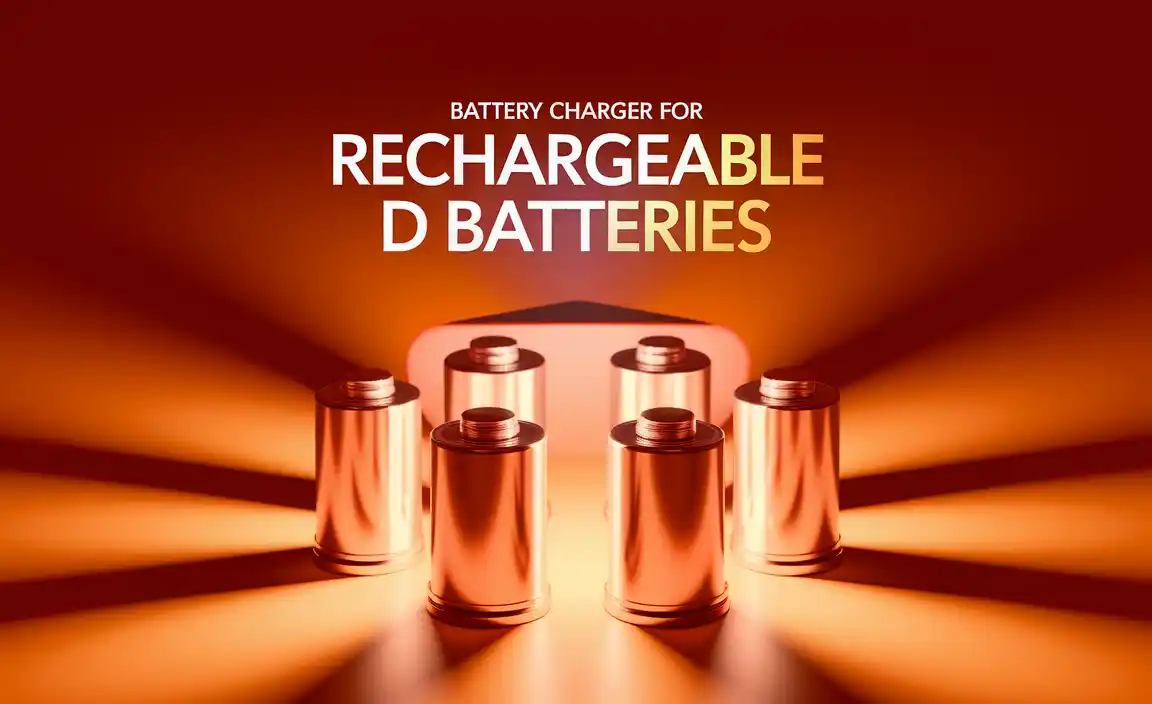Have you ever tried to start your car and heard that awful clicking sound? It can feel scary. You might be wondering, “Is it the battery?” Picking the right battery for your car is very important. A good battery keeps your car running smoothly. But how do you choose the best one?
Imagine you’re in a hurry, and your car won’t start. It can ruin your plans, right? Knowing how to pick a battery for your car can save you from that headache. Batteries come in different sizes and types. They aren’t one-size-fits-all. You need the right fit for your make and model.
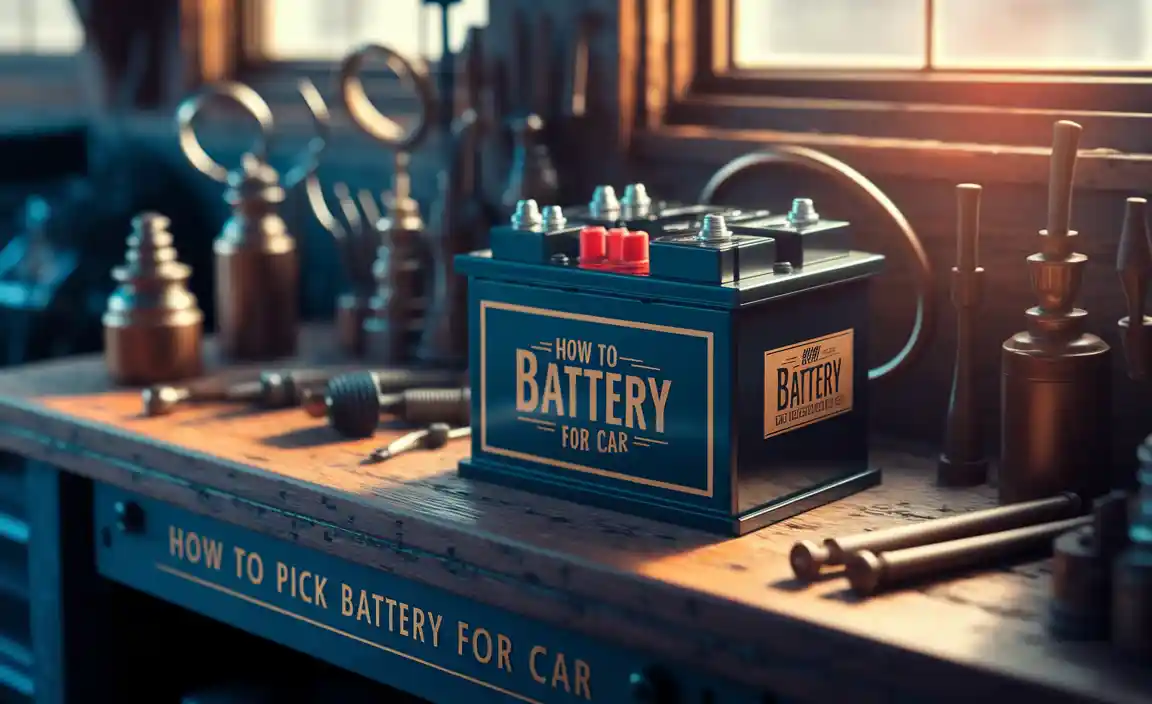
Fun fact: Did you know a car battery usually lasts around three to five years? That means knowing when to replace it can help you avoid sudden issues. So, let’s dive into how to pick the perfect battery for your car. You’ll soon be ready to make the right choice!
How To Pick The Right Battery For Your Car Efficiently
Choosing the right battery for your car can seem tough, but it doesn’t have to be. First, check your car’s manual for the correct battery size and type. Did you know that most batteries last about three to five years? If your battery is older, it’s time to think about a replacement. Look for features like cold cranking amps (CCA) for better performance in winter. With these tips, you can keep your car running smoothly and avoid surprises on the road!
Understanding Car Battery Basics
Types of car batteries: leadacid vs. AGM vs. lithiumion. How car batteries work and their role in vehicle performance.
Car batteries store energy to start your vehicle. They come in several types, mainly lead-acid, AGM, and lithium-ion. Lead-acid batteries are common and cheap, but heavy. AGM batteries are durable and work well in extreme weather. Lithium-ion batteries are light and long-lasting but often cost more. Each type affects how your car performs and runs efficiently. Understanding these basics helps you choose the right battery for your vehicle.

What are the types of car batteries?
There are three main types of car batteries: lead-acid, AGM, and lithium-ion. Each has unique features and benefits.
Key Differences:
- Lead-acid: Affordable but heavy; good for standard cars.
- AGM: More robust, better for extreme conditions.
- Lithium-ion: Light and long-lasting; great for modern cars.
Assessing Your Car’s Requirements
Checking your owner’s manual for specifications. Understanding the Cold Cranking Amps (CCA) and Reserve Capacity (RC).
Every car needs the right battery to run smoothly. Start by checking your owner’s manual. It has details about the right battery type. Important numbers to know are Cold Cranking Amps (CCA) and Reserve Capacity (RC). CCA shows how well the battery works in cold weather. RC tells how long the battery can run without charging. Understanding these will help you choose the best battery for your car.
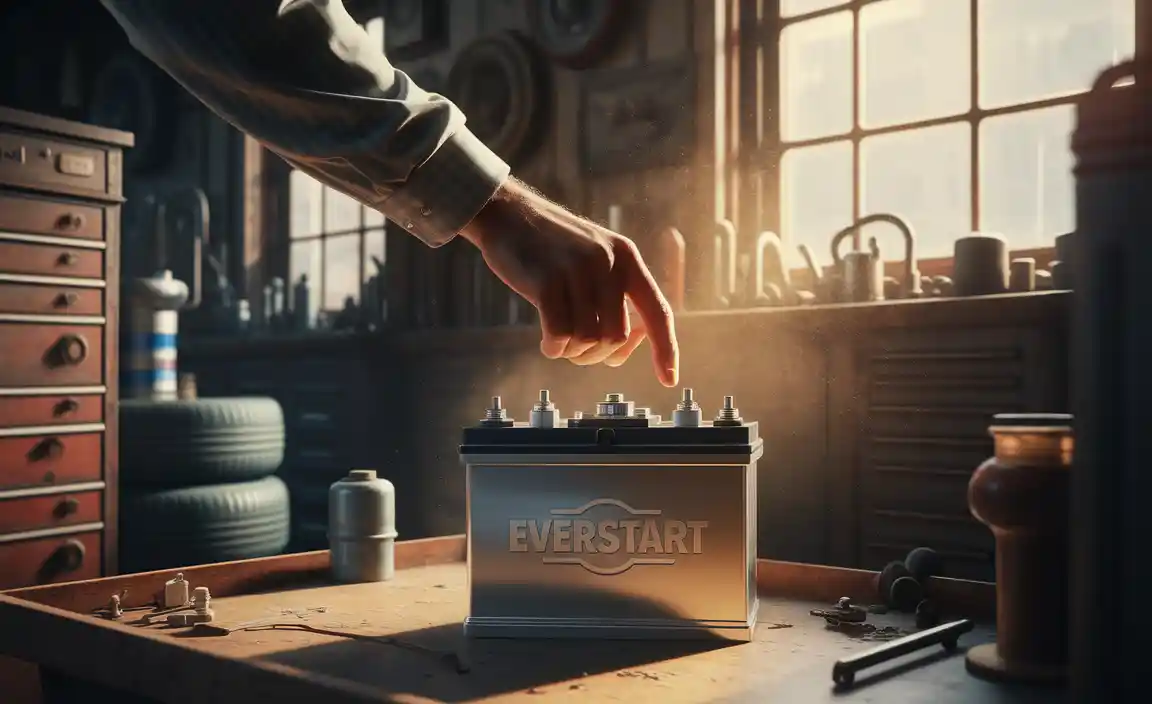
What do CCA and RC mean?
Cold Cranking Amps (CCA) measure a battery’s starting power in cold weather. Reserve Capacity (RC) tells how long the battery can keep working without charging. Knowing both will help you make a smart choice.
- Check the manual for battery specs.
- Look for CCA rating for winter starts.
- Consider RC to understand working time.
Choosing the Right Size and Fit
Importance of battery group size and fitting. Tools to measure and verify battery dimensions.
Getting the right battery size is like fitting into your favorite pair of shoes. If it’s too big or too small, things won’t go smoothly! Not only does your car battery need to fit snugly, but it also comes in various group sizes. Using the wrong one can lead to problems faster than a cat can knock over a lamp.
To measure for your new battery, grab a tape measure. Measure the height, width, and length of your old battery. If you don’t have that on hand, don’t worry. Many car manuals or battery stores have this information. Check out the handy table below for some common battery sizes:
| Group Size | Dimensions (L x W x H) |
|---|---|
| Group 24 | 10.25″ x 6.81″ x 8.88″ |
| Group 35 | 9.06″ x 6.81″ x 7.87″ |
| Group 75 | 9.44″ x 5.12″ x 7.87″ |
Remember, picking the right battery is crucial. A perfect fit helps your car start better, saving you from those awkward “uh-oh” moments!
Evaluating Battery Brands and Models
Top brands: features, warranties, and performance reviews. Comparison of budget vs. premium options.
Choosing the right battery for your car means looking at brands and models. Many popular brands, like Optima, Interstate, and Batt-Tech, offer excellent features. Each brand has different warranties and performance reviews. Here’s what to consider:
- Optima: Great for high performance and long life.
- Interstate: Known for reliability and good warranties.
- Batt-Tech: Budget-friendly with decent quality.
Premium options often last longer, while budget choices may save money but might need replacing sooner. Consider what works best for you!
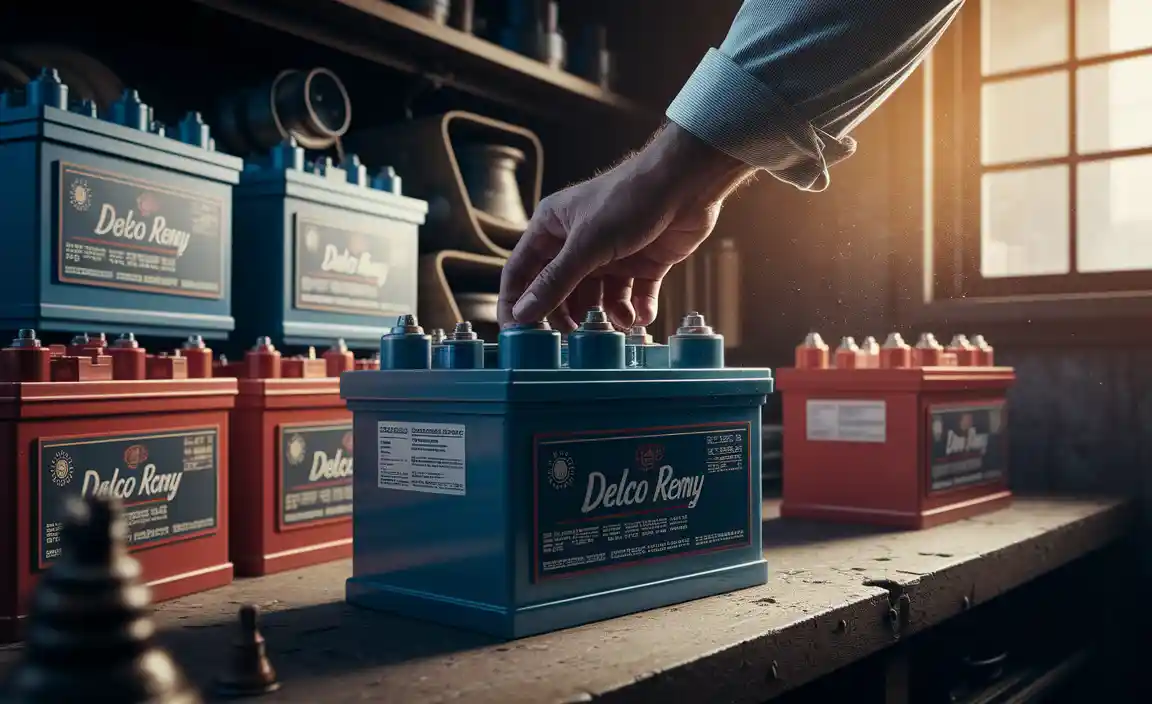
What are the benefits of popular battery brands?
Choosing a popular battery brand can bring reliability and better warranties. Top brands typically offer good performance and customer support.
Considering Environmental Factors
How climate affects battery choice: hot vs. cold weather. Tips for selecting batteries suitable for your region.
Weather plays a big role in choosing a car battery. In hot weather, it’s important to pick a battery that can handle heat. Extreme heat can cause batteries to wear out faster. In cold weather, a strong battery is needed to start cars easily. Choose a battery with good cold-cranking amps. Here are some tips:
- Check your local climate.
- Look for batteries made for your region.
- Ask experts at the store for advice.
How does climate affect battery choice?
In hot climates, batteries can die quicker. In cold climates, batteries might struggle to start. Choose a battery that fits your local weather.
Installation and Maintenance Tips
Best practices for battery installation to ensure longevity. Routine maintenance to extend battery life.
To keep your car battery healthy, follow these helpful tips. Always secure the battery tightly in the car. This prevents damage from bumps. Clean the terminals regularly to avoid corrosion. A clean battery lasts longer. Check water levels, if your battery needs it. Make sure to charge it fully as well.
- Use a wrench for tight connections.
- Store the battery in a cool, dry place when not in use.
- Test the battery twice a year to catch issues early.

How can I maintain my car battery?
Regular cleaning and testing can help you maintain your car battery. Wash the battery terminals and check them twice yearly. This can double your battery’s life.
Where to Buy Your Car Battery
Pros and cons of purchasing online vs. instore. Factors to consider when choosing a reputable retailer.
Shopping for a car battery can be done in two ways: online or in-store. Each option has its good and bad points. Buying online offers convenience. You can browse many brands and prices from home. However, you can’t see the battery before buying, which might lead to mistakes.
In-store shopping lets you ask questions and inspect the product. But it might have fewer choices. Consider these factors:
- Reputation of the retailer
- Return policies
- Shipping costs
- Warranty offers
Both options can be good if you choose wisely!
Where is the best place to buy a car battery?
The best place depends on your needs. If you want help, go to a store. If you want convenience, try online.
Savings and Cost Considerations
Analyzing the lifespan vs. upfront cost of different batteries. Tips on finding discounts and promotions on car batteries.
Choosing the right battery for your car involves thinking about both cost and lifespan. A cheaper battery might save you money now, but it could wear out faster. This can lead to more expenses later. To find good deals, try these tips:
- Check local auto shops for promotions.
- Look online for coupon codes.
- Compare prices at different stores.
Remember, spending a little more for a longer-lasting battery can save you money in the long run!
How can I save money on car batteries?
To save money on car batteries, search for discounts and compare prices from various stores. Buying a battery during sales events can also help you. Keep an eye out for special offers!
Conclusion
In conclusion, picking the right battery for your car is important. Think about your car’s needs, battery type, and brand reputation. Always check the battery’s size and specifications before buying. This will help ensure better performance and longevity. We encourage you to do research and ask questions at your local store. Happy driving!
FAQs
What Are The Key Specifications To Consider When Selecting A Battery For My Car?
When picking a battery for your car, you should check a few important things. First, look at the battery’s size to make sure it fits in your car. Next, check the power it provides, called cold cranking amps (CCA), which helps start your car in cold weather. Also, see how long the battery lasts, known as battery life. Finally, check the warranty, which tells you how long the battery is covered if something goes wrong.
How Do I Determine The Correct Size And Group Number For My Car’S Battery?
To find the right battery size for your car, look in the owner’s manual. It tells you the battery size and group number. You can also check the old battery for labels. If you’re unsure, ask a helper at the car parts store. They can help you pick the right one!
What Types Of Car Batteries Are Available, And Which One Is Best For My Vehicle’S Needs?
There are three main types of car batteries: lead-acid batteries, AGM (Absorbent Glass Mat) batteries, and lithium-ion batteries. Lead-acid batteries are common and good for starting your car. AGM batteries last longer and are better for cars with lots of electronics. Lithium-ion batteries are newer and often used in electric cars. To choose the best one for your car, check your owner’s manual or ask a mechanic for help.
How Can I Assess The Cold Cranking Amps (Cca) Required For My Car’S Battery?
To find the cold cranking amps (CCA) your car needs, check your owner’s manual. It usually has this information. You can also look at the old battery for a label showing the CCA. If you’re unsure, ask an auto shop for help. They can tell you the right number for your car.
Are There Any Important Maintenance Tips To Keep In Mind After Installing A New Car Battery?
After you install a new car battery, check it regularly. Make sure the battery terminals are clean and tight. Keep the battery dry and free from dirt. If you see any cracks, tell an adult right away. Finally, avoid leaving your lights on for a long time.
{“@context”:”https://schema.org”,”@type”: “FAQPage”,”mainEntity”:[{“@type”: “Question”,”name”: “What Are The Key Specifications To Consider When Selecting A Battery For My Car? “,”acceptedAnswer”: {“@type”: “Answer”,”text”: “When picking a battery for your car, you should check a few important things. First, look at the battery’s size to make sure it fits in your car. Next, check the power it provides, called cold cranking amps (CCA), which helps start your car in cold weather. Also, see how long the battery lasts, known as battery life. Finally, check the warranty, which tells you how long the battery is covered if something goes wrong.”}},{“@type”: “Question”,”name”: “How Do I Determine The Correct Size And Group Number For My Car’S Battery? “,”acceptedAnswer”: {“@type”: “Answer”,”text”: “To find the right battery size for your car, look in the owner’s manual. It tells you the battery size and group number. You can also check the old battery for labels. If you’re unsure, ask a helper at the car parts store. They can help you pick the right one!”}},{“@type”: “Question”,”name”: “What Types Of Car Batteries Are Available, And Which One Is Best For My Vehicle’S Needs? “,”acceptedAnswer”: {“@type”: “Answer”,”text”: “There are three main types of car batteries: lead-acid batteries, AGM (Absorbent Glass Mat) batteries, and lithium-ion batteries. Lead-acid batteries are common and good for starting your car. AGM batteries last longer and are better for cars with lots of electronics. Lithium-ion batteries are newer and often used in electric cars. To choose the best one for your car, check your owner’s manual or ask a mechanic for help.”}},{“@type”: “Question”,”name”: “How Can I Assess The Cold Cranking Amps (Cca) Required For My Car’S Battery? “,”acceptedAnswer”: {“@type”: “Answer”,”text”: “To find the cold cranking amps (CCA) your car needs, check your owner’s manual. It usually has this information. You can also look at the old battery for a label showing the CCA. If you’re unsure, ask an auto shop for help. They can tell you the right number for your car.”}},{“@type”: “Question”,”name”: “Are There Any Important Maintenance Tips To Keep In Mind After Installing A New Car Battery? “,”acceptedAnswer”: {“@type”: “Answer”,”text”: “After you install a new car battery, check it regularly. Make sure the battery terminals are clean and tight. Keep the battery dry and free from dirt. If you see any cracks, tell an adult right away. Finally, avoid leaving your lights on for a long time.”}}]}
Resource:
-
Understanding Cold Cranking Amps (CCA): https://www.diehard.com/blog/how-to-understand-cold-cranking-amps
-
Battery Group Size Reference Chart: https://www.batteryequivalents.com/bci-battery-group-size-chart.html
-
Car Battery Lifespan Tips: https://www.familyhandyman.com/project/how-to-make-your-car-battery-last-longer/
-
How Weather Affects Battery Performance: https://www.napacanada.com/en/blog/how-weather-affects-car-battery-performance

